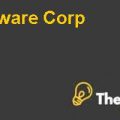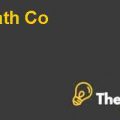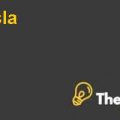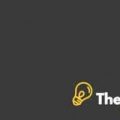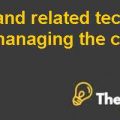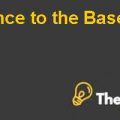
Marketing at the Vanguard Group
Brief Summary:
As mentioned in the case, a mutual fund company named as Vanguard was going through a transformation process in terms of its business model that the company has begun in the year 2002 and continued till 2003. The company was at the maturity stage in its product life cycle curve and came to stagnation. Furthermore, the segments of the market were near to convergence and that in turn results in shifting of needs and wants of customers. The company was facing challenges with respect to the structure of the company as there was a high need to reorganize the overall structure of the company. Moreover, the company has to take measures to maintain its brand image and sustain positive recognition of the brand. The main parts in the overall transformation model include re-describing the value proposition and customers of the company. Another feature of the model includes converting from asset based company to market-based company.
Facts of the case:
Vanguard is a US based investment management company with CEO John J. Brennan and employs more than 10,000. Right now, the company has more than 118 mutual funds that worth $557 billion. By the end of 2002, Vanguard’s 118 mutual funds accounted for 10% of all US mutual fund's assets. The company has mutual funds that are owned by its clients. The company is headquartered in Forge, Pennsylvania. Vanguard is famous as one of the top most companies that are engaged in the investment management business. The services of the company include providing record keeping service along with other investment services completely.
Customers
The customers of the company can be defined as the ones who are looking for value in whatever they are buying. The main customers of the company are retail customers that are specifically seeking for low cost and long-term investment in mutual funds. They are the ones who are not known to be active traders in the market. The main reason behind their not been so active is their risk-averse nature. The nature of the customers is getting maximum profits and returns on the expense of other long term financiers. Further, the company has institutional services consumers for defining benefits management and defined contribution management.
Competitors
The two main competitors of the company include Fidelity and Putnam. The primary goal of Vanguard is to provide mutual funds with strategic and clear objectives. Moreover, the company is aiming to provide returns on investment better than its direct competitors.
Company Strengths, Weaknesses, Priorities
The main competencies of the company include being a market leader, and the company has been ranked as number one or number two in terms of cash flow over the time horizon of more than ten years. The company is known to be a provider of financial services with low cost and no compromise on quality. Vanguard funds were no-load and purchased directly by investors. Furthermore, the company is best known for its reputation and reliability and enjoyed high brand recognition and loyalty for years. Moreover, the company is good in terms of operational efficiency as well. Overall core competencies of the company have been summarized in figure 1 in the appendix below.
Problem Statement:
The company was facing problem with respect to the market deregulation that entails major financial industry such as investment banks, commercial banks and other insurance companies to make their entrance into the country of others. Another issue that the company was facing was related to the dynamic and risky nature and characteristics of the capital markets where fluctuations and volatility is always high. Other than that, the U.S market was near to saturation and became stagnant. Additionally, the company was less progressive in terms of its marketing strategies. Further, the main focus of the company has always been on making long term investment and neglect the efficiency that has been required in marketing. The company has the balance scorecard system, to manage its operation, but failed to initiate growth opportunities in terms of marketing.
Alternative development:
Alternative 1: maintain the status quo
Alternative 2: International Expansion (The Company can tap into the markets like Pacific Rim, Europe and Australia as the US market has come to its maturity stage).
Alternative 3: Revamping the marketing strategy
Decision Criteria:
By analyzing the current situation of Vanguard that include SWOT analysis of the company. The core problem and other issues have been identified. On the basis of these problems, alternatives have been generated. These alternatives will be evaluated through decision criteria matrix shown below.......................
This is just a sample partial case solution. Please place the order on the website to order your own originally done case solution.
Senior executives at Vanguard evaluate their marketing strategy. In particular, they look at their approach to market segmentation, organizing the marketing function and the weight placed on marketing metrics in the corporate dashboard in light of economic and stock market decline.
This event is accompanied by a short video for Premium Teachers to show in class. To view the video, or to show the students, click on the video icon. "Hide
by John A. Quelch, Carin-Isabel Knoop Source: HBS Premier Case Collection 21 pages. Publication Date: Aug 05, 2003. Prod. #: 504001-PDF-ENG


